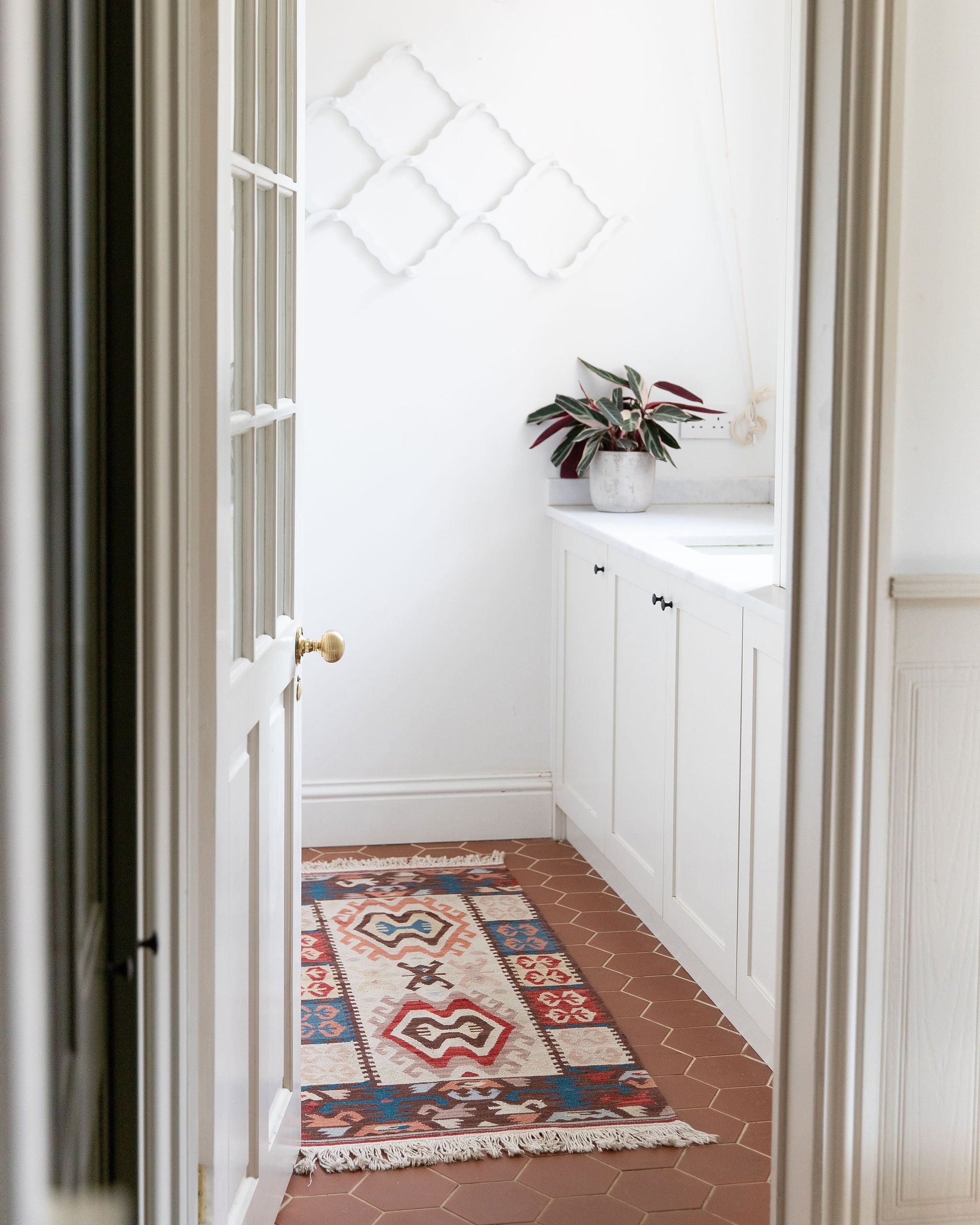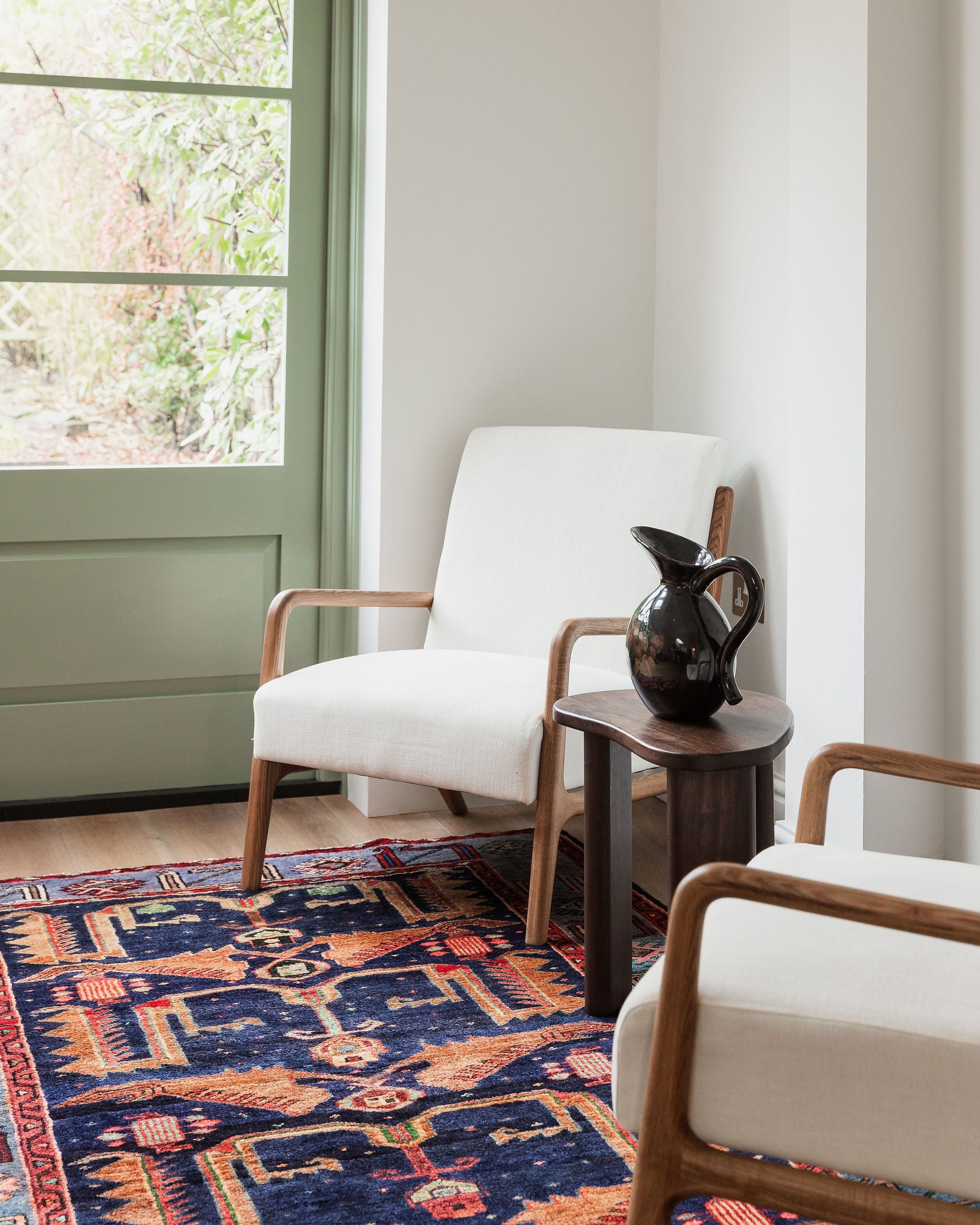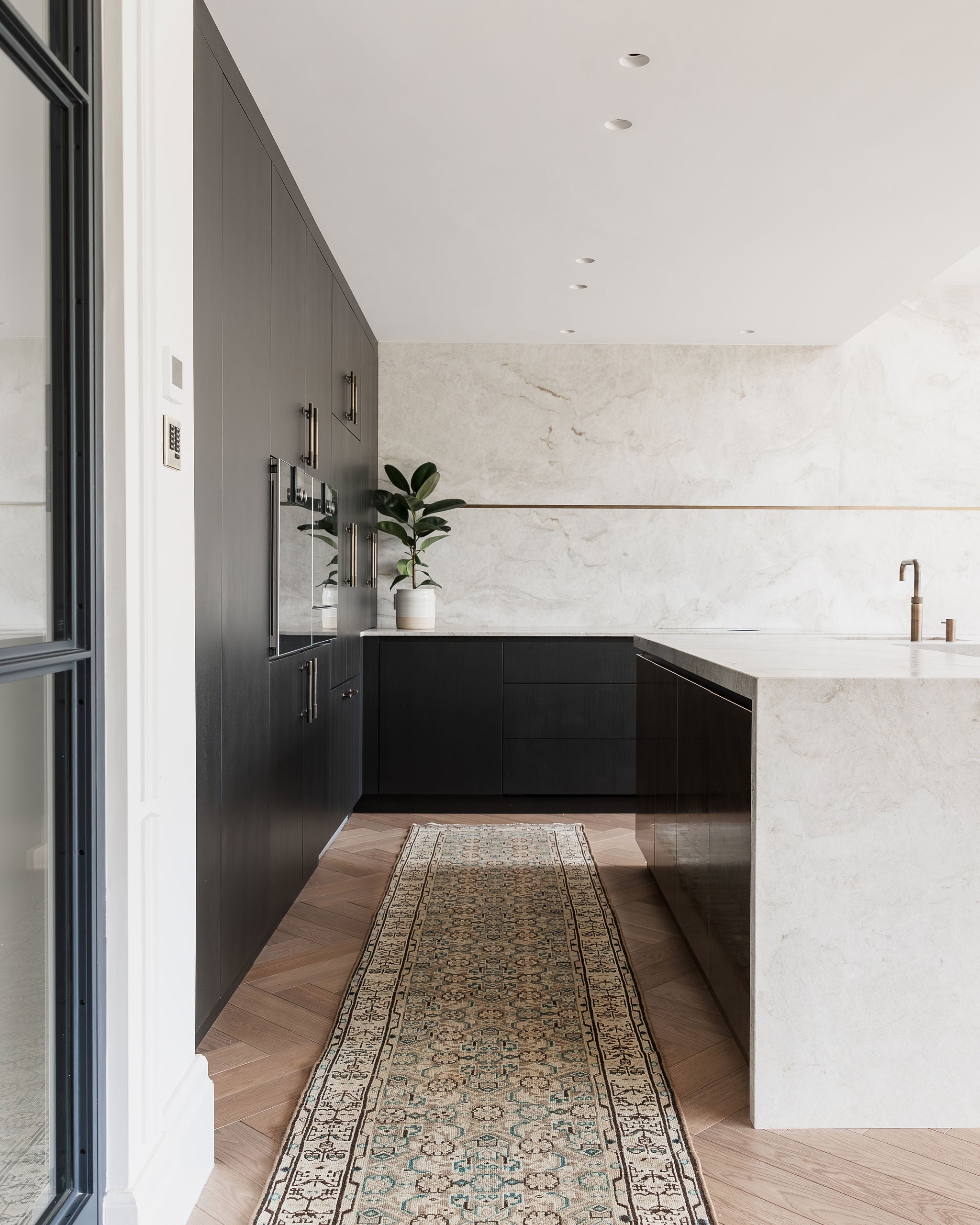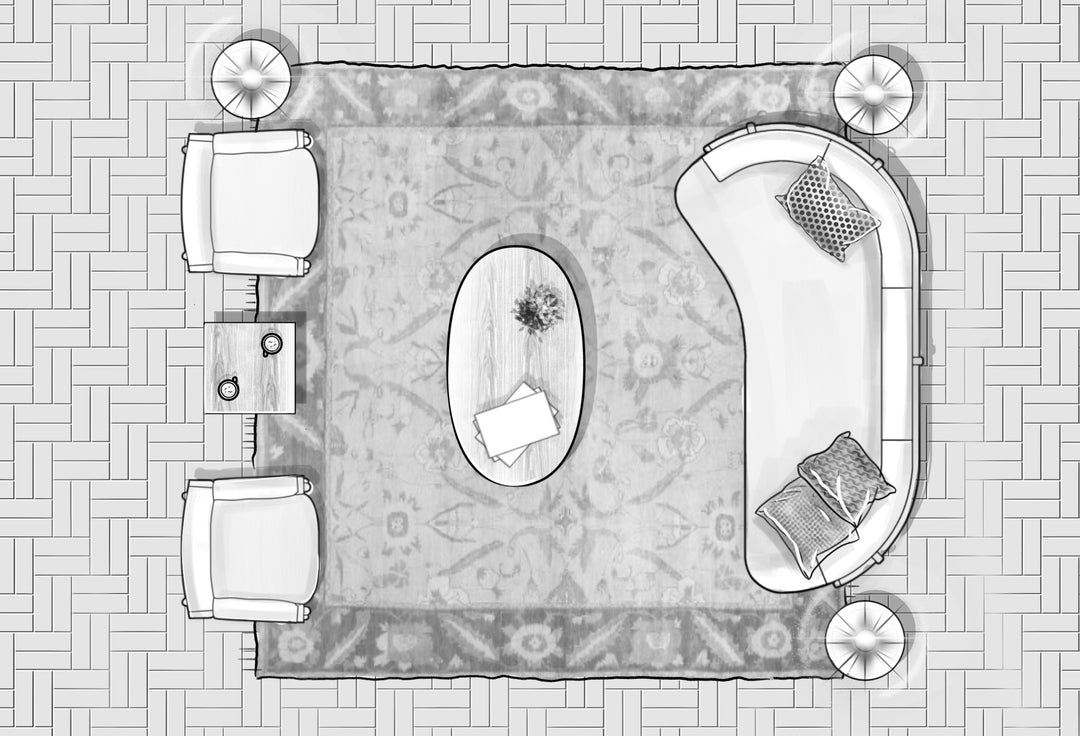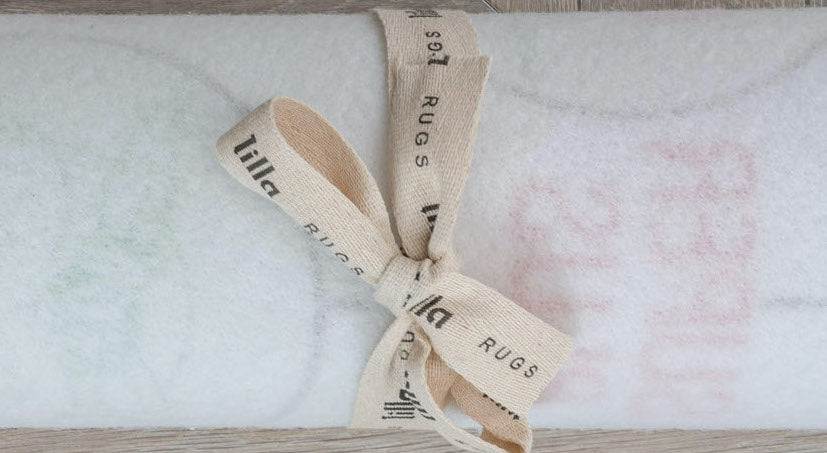Rug Shedding: Everything You Need To Know
'Will this rug shed?' - a question that comes up time & time again. It isn't one that you consider at the beginning of your rug buying journey, but is something that many people become particularly concerned with after they have experienced the dread that is rug shedding.
First I'm going to take you through the rugs that are likely to shed, and those that are not. Hopefully this will benefit those of you that have not yet purchased your new rug. Have no fear though, if you have already bought a rug and are experiencing a little (or a lot) of rug shed, I'll also go on to give you some top tips to help calm it down.
So, first things first, which rugs actually shed, and why?
Handmade vs. Machine Made
Handmade rugs are made with 100% natural materials: wool, cotton, and sometimes silk. These are the ones that tend NOT to shed. Constant shedding is far more common with synthetic fibres (such as viscose, acrylic, or nylon). Synthetic materials tend not to be quite as strong and are therefore affected by traffic & wear, which leads to major SHED.
The slightly confusing part is that sometimes handmade rugs, made from natural materials, have a little bit of shed during the first couple of months, that will then stop. However, synthetic/ machine made rugs start out with no shed, but over time will start to shed more and more. The reason for this is that many synthetic rugs are produced using machine tufting which essentially punches wool through a latex base. As the foundation is made from latex, it will begin to crack over time, which leads to the wool falling out from the base. Handmade/ hand-knotted rugs, on the other hand, knot each piece of wool into the cotton foundation, which makes for a connection that will never break.
All in all, if you are at the start of your journey, you want to go for handmade over machine made if you are at all concerned with shed. These are of course generally more expensive, but much better quality. It is, I'm afraid, a case of 'you get what you pay for'. However, don't worry friends, there are a few exceptions to this rule, if you want to keep to a lower spend. The first is a flatweave rug, also known as Kilim rugs, which I cover below. The second, if you want to keep within machine made, is to opt for Jute or Braided rugs, which are also technically flatweaves (just not always made by hand).

Main Image Credit: Hommemaker; Middle Runner Riley Kilim Rug
Handmade Rugs: The absolute zero shed, the next to nothing shed, the first couple months shed.
Within the category of handmade rugs, there are still different levels of shed susceptibility.
Absolutely Zero Shed
This has been touched on above, but the rugs you see ZERO shed with are handmade flatweave rugs, also known as Kilim rugs. The reason for this is that these rugs do not have a pile. Therefore, there is simply nothing to shed. If there was any shedding it would be tiny tiny fibres, that you really would not see with the naked eye.
What is a flatweave? Flatweave describes a rug that is woven on a loom rather than knotted (by hand one knot at a time). It is created by interlocking warp (vertical) and weft (horizontal) threads. So still very much made by hand - but with a weaving technique, rather than a knotting. You can read about Kilim rugs in more detail here.
You can shop all Kilim Rugs Here.

Our Top 3 featured: LIYA, MILLER & GIA.
Next to Nothing Shed
The next category is the most common of all handmade rugs, that Persian Rugs, Afghan Rugs & Indian Rugs fall into.
These rugs are either 100% wool, wool pile with cotton foundation, wool & silk pile with cotton foundation, wool & silk pile with silk foundation, or 100% silk. All hand knotted, these rugs have incredibly strong. The pile never falls from the foundation. You may see a little bit of shed at the beginning, but it is unlikely you will notice it.
You can read more about the quality of these rugs here, and how they are made here.

Persian Rug Choices: MARLIN, ATALIA, AKELA.
First Couple Months Shed
The rugs that fall into this category are Moroccan Berber Beni Ourain rugs. It is super important to note that these rugs, that are super in style now, come in all different types of quality. You can get many 'Moroccan Berber Style' rugs that you will see most big retailers stocking. These rugs have taken inspiration from the authentic Moroccan Berber rugs but are not in fact made from the original Moroccan wool, and are not handmade. Therefore, as with the first section on handmade vs. machine made, these are the most susceptible to shed.
You then have what I call the 'market quality'. These Berber rugs are authentic and sold in the Moroccan medinas (old cities) or by brokers via the likes of Etsy. Whilst authentic, many of these rugs use wool that come from local markets, also known as 'dead wool'. You can often tell if you have a 'market quality' Moroccan Berber rug by its density and size of knot. The market rugs are more 'floppy', almost blanket like, and have loose knots. Therefore, these rugs are far more likely to shed, as the wool is loose from the foundation and simply falls out. It will likely slow down after a couple of months, but can last longer.
Together with my lovely dad, we've been working hard to locate the best quality of wool for our Moroccan Berber rugs, and the production gets even better with every round. The best wool, and most highly skilled artisans can be found in the Atlas Mountains. Atlas wool mostly comes from sheep in higher altitudes, which creates a longer fibre length to the wool, and so reduces the amount and duration of shedding. There is always some shedding in the first 3 months of having this type of rug down, generally because it has a higher pile and there will be some excess fibre from the weaving process. However, this will eventually stop and then these particular Moroccan Berber Beni Ourain rugs hold their form for years & can withstand high traffic. Hence why these are in the 'first couple months' shed category.

So, that is the round up of which rugs Shed the most, and the least. Now, if you happen to have a rug that is already shedding, I do have 4 little tips to help:
1. Vacuum Technique
Don't be afraid to vacuum fairly regularly. Just make sure you have the setting down to its lowest, as this will prevent any extra fibres being pulled out and instead just remove the excess. Also be sure to avoid brush settings.
2. Underlay
Use an underlay! This will stop any extra movement which will, in turn, reduce the amount of shedding. Do be careful which underlay you use, if they are too sticky they may damage your floor & the rug. We do stock a good quality underlay, so feel free to get in touch if you need help.
3. Soft Brush Rake
Try a soft brush broom/ rake - it'll gently get rid of excess fibres without pulling further from the foundation. Here is one for you.
4. Traffic
Place the rug in a low traffic area. The more you are walking/ running/ playing on it, the more shed that will incur.
I hope this has been helpful! As ever, do get in touch if you have any further questions or concerns.


